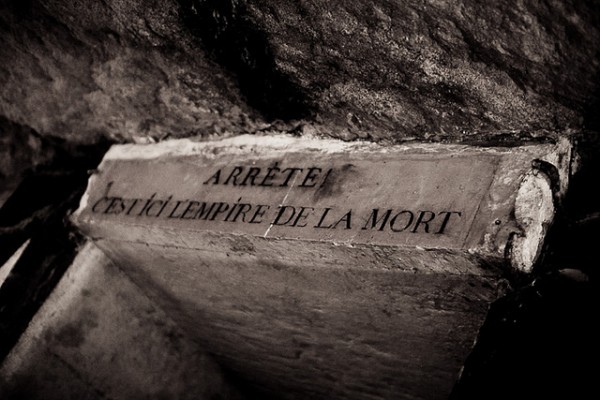
Some people are what they eat or read, other people are what they wear or fear, but when it comes to college professors, we are what we tape to our office doors. Festooned with cartoons and photos, bumper stickers and op-eds, credos and captions, the silliest and most serious sentiments, our doors are an ancient form of self-expression and communication that endures in our age of social media. They are palimpsests that tell a history—a past that, try as you might, you cannot close the door on.
When I arrived at my first teaching post—the same one I’ve held for 22 years—I was given my own office. A remarkable moment, as any newly minted PhD knows: after years of sharing squalid spaces, filled with nicked and mismatched furniture, with squads of fellow teaching assistants, I suddenly had the only key to, well, a squalid space filled with nicked and mismatched furniture. But this time it was different: it was mine, all mine!
Upon taking possession of my office, my first act was to find a roll of tape. Out of a box I pulled the sacred texts intended for my own door. Gary Larson, check. (Three frames, the first showing a bunch of cows chatting in a pasture while a lookout shouts “Car!”; the second with the cows munching on grass as the car—with two goofy passengers—speeds past; the third with the cows picking up where they left off in the first frame.) Doonesbury, check. (A professor who, lecturing to his students, attempts in vain to provoke a response—any response. Only when he crumples in the last frame, muttering, “Teaching is dead,” does a student finally pipe up: “Boy, this course is really getting interesting.”) George Santayana, check. (“Those who cannot remember” … well, you remember the rest.)
Busy personalizing my door, I didn’t at first hear the soft clearing of a throat behind me. I turned around and saw an older man carrying a worn leather suitcase and wearing a white, slightly frayed, short-sleeve shirt and a thin blue-and-silver tie. He introduced himself as a life insurance salesman who was visiting new faculty. As he extended his hand, I replied in kind and saw him grimace: my fingers were still laced with Scotch Tape.
Life insurance? Of course, nothing was then further from my mind—or my door. I was young, ambitious, and tenure-track, for heaven’s sake. As I untangled the web of tape between our hands, I thanked the gentleman for the visit and told him I needed to consider my options.
I’ve taped other documents to my door over the years. There were the notes canceling office hours because of my honeymoon or the birth of one of my children. Next came the family photos and drawings made by my children, letting my students know that this was Daddy’s Office. Cartoons still crowded the space, but their tone had changed. Politics had been demoted, and Roz Chast now seemed to offer one epiphany after another. The door no longer offered epigrams, but it did have an epitaph: a New Yorker cartoon of a gravestone: “Never Sick A Day In His Life—And Now This.” Of course, you can read too much into my door—especially if you’re an academic, condemned to a life of reading too much into everything, from Snooki’s sayings to your spouse’s shopping lists.
In a way, my office door frames a part of my life. When students and colleagues stand on the threshold to announce why they loved this book, whisper how they identified with that character’s trials, and argue why I completely misunder- stood their paper or monograph, the doorway enlivens; it enriches.
And at times it darkens as well. A few years ago one of my colleagues died of cancer; his office remained shut for several months, yet the closed door hummed with memories. Ross was by far the most popular professor on campus: he was a short man with a subversive and seriously funny world- view. His office door never closed to the unending train of students who came to chat. Shortly before his death, I went to the hospital to see him. The door to his room was transparent; what I saw through it was anything but. Attached to countless tubes and tapes, Ross was a shadow of what he had once been. This man in the hospital was no longer Ross, and this door was no longer his own.
The other day, it so happens, I taped to my door a postcard from last summer’s family trip to France. The Eiffel Tower? The Arc de Triomphe? Nope: it is the legend blazoned above the entrance to the Catacombs: “Here is the Kingdom of Death.” Bleak? Hardly. The kids and I had a riot walking down the cold and damp tunnels lined with countless bones and skulls. It was, as my daughter said, better than Pirates of the Caribbean.
All those years ago, I told that insurance salesman that I needed to consider my options. Well, as I look back on the aging face of my door, I see that my options have been narrowing ever since. My door can shut out the hubbub at the copy machine or the conversations from a colleague’s office, but it cannot shut out time. Heraclitus was wrong: the one thing that never changes is not change, but undergraduates. Every time I step outside my office, my students are always 18. But I am no longer 32. If you don’t believe me, check my office door. Gary Larson came down a long time ago, I’ve refused to age with Doonesbury and Santayana, and … well, I now know the one thing my students are doomed to repeat is that silly saying.

